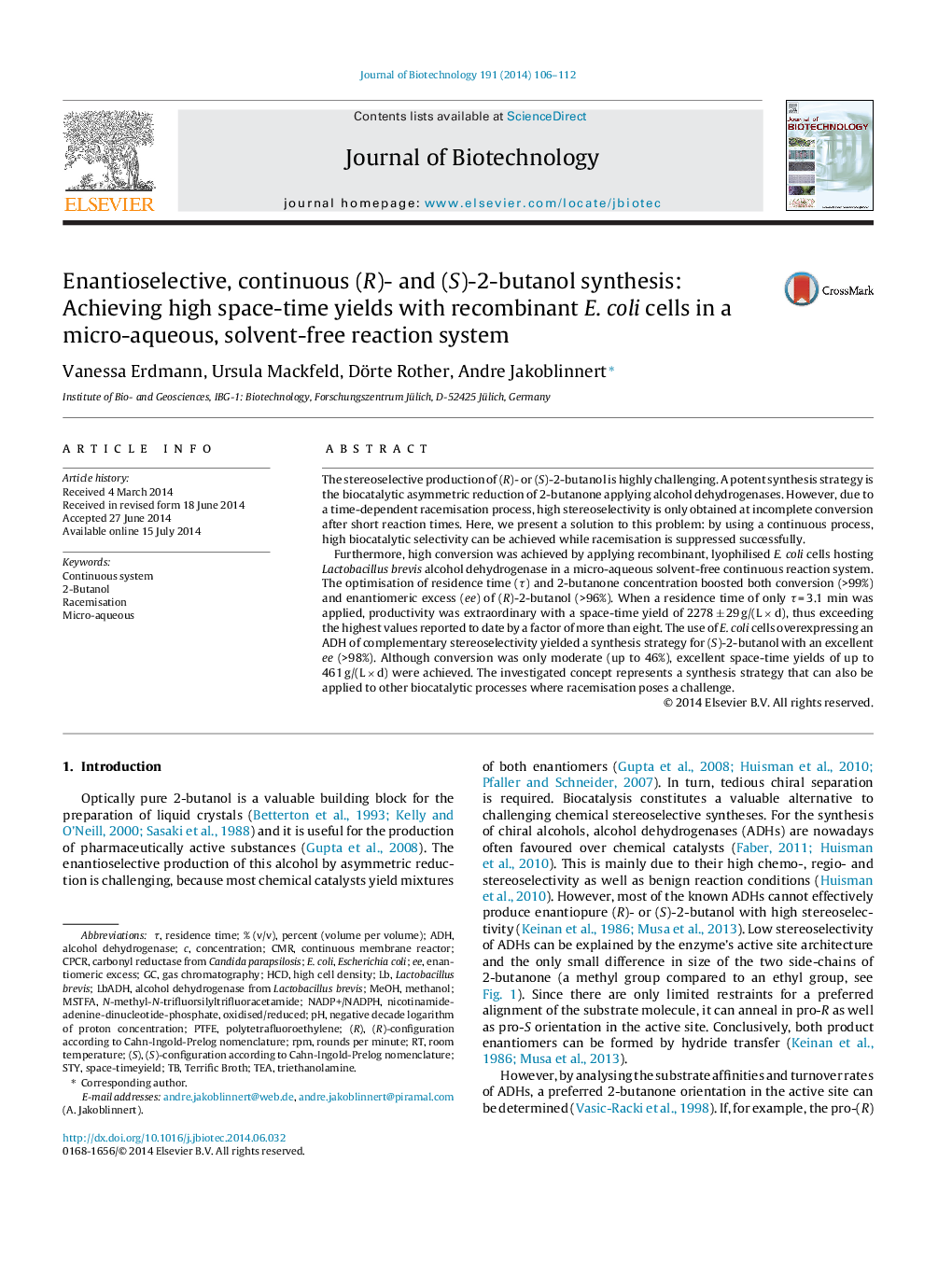| Article ID | Journal | Published Year | Pages | File Type |
|---|---|---|---|---|
| 23005 | Journal of Biotechnology | 2014 | 7 Pages |
•Biocatalytic, stereoselective 2-butanone reduction in continuous micro-aqueous system.•High conversions (>95%) and ee (>96%) achieved for (R)-2-butanol.•Extremely high space-time yields were obtained.•System was successfully transferred to a (S)-selective catalyst.
The stereoselective production of (R)- or (S)-2-butanol is highly challenging. A potent synthesis strategy is the biocatalytic asymmetric reduction of 2-butanone applying alcohol dehydrogenases. However, due to a time-dependent racemisation process, high stereoselectivity is only obtained at incomplete conversion after short reaction times. Here, we present a solution to this problem: by using a continuous process, high biocatalytic selectivity can be achieved while racemisation is suppressed successfully.Furthermore, high conversion was achieved by applying recombinant, lyophilised E. coli cells hosting Lactobacillus brevis alcohol dehydrogenase in a micro-aqueous solvent-free continuous reaction system. The optimisation of residence time (τ) and 2-butanone concentration boosted both conversion (>99%) and enantiomeric excess (ee) of (R)-2-butanol (>96%). When a residence time of only τ = 3.1 min was applied, productivity was extraordinary with a space-time yield of 2278 ± 29 g/(L × d), thus exceeding the highest values reported to date by a factor of more than eight. The use of E. coli cells overexpressing an ADH of complementary stereoselectivity yielded a synthesis strategy for (S)-2-butanol with an excellent ee (>98%). Although conversion was only moderate (up to 46%), excellent space-time yields of up to 461 g/(L × d) were achieved. The investigated concept represents a synthesis strategy that can also be applied to other biocatalytic processes where racemisation poses a challenge.
